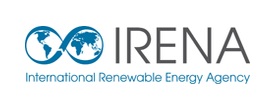May 3, 1978, fell on a Wednesday, but it was Sun Day as well. President Jimmy Carter, who had designated the date to highlight the potential of solar energy, spent part of the afternoon visiting an office park in Golden, Colorado. It was there, 10 months earlier, that the Solar Energy Research Institute (SERI) opened.
The oil embargo of 1973 was one impetus for the United States to consider establishing a laboratory to explore non-petroleum energy options. Plans ensued that eventually led to SERI's inauguration on July 5, 1977. Scientists with expertise ranging across the disciplines of materials science, depositional techniques, measurements and characterization, and engineering were brought together, in a large part, to advance fundamental understanding of solar energy and to support an embryonic photovoltaics (PV) industry. Their job was to ultimately develop new solar technology and to chart a path toward its commercialization for homes and businesses. If the work was successful, solar energy would become plentiful and cheap.
"We must begin the long, slow job of winning back our economic independence," Carter said that afternoon. "Nobody can embargo sunlight. No cartel controls the sun. Its energy will not run out."
SERI began with rented office and laboratory space for 40 employees whose role was largely ignored by industry and academia, recalled senior research fellow emeritus Art Nozik, who joined the laboratory in 1978 as a senior scientist. "In the beginning, there were very few universities interested in solar energy because it was considered to be like a hippie thing," he said. "It wasn't taken seriously."
Despite this, SERI grew to become a 300-acre research center now known as the National Renewable Energy Laboratory (NREL). One of 17 U.S. Department of Energy's national laboratories, NREL commands a unique role in that it focuses exclusively on bringing new advanced energy technologies to light. Since its inception 40 years ago, the laboratory has expanded its research capabilities with expertise in generating power from resources such as wind, water, and even algae.
40 Years Later, Here's What We've Done
Even before SERI, research to harness power from the sun had been going on for hundreds of years but it wasn't until the past 40 years, with NREL's help, that solar technology started making significant strides. During this time, six NREL breakthroughs were particularly notable:
High-efficiency cells: Silicon solar cells were fairly new when NASA sent the Vanguard I satellite into orbit in 1958. But the cell used for that first solar-powered satellite could only capture and use about 9% of the sunlight that reached it, so the technology was too expensive and inefficient to spark much interest among homeowners and businesses back on Earth. SERI's mission was to do better to find a way to bring costs down and efficiencies up.
NREL archive photo shows Jerry Olson and Sarah Kurtz. NREL's Jerry Olson found that gallium indium phosphide (GaInP) promising for use in semiconductors but difficult to alloy with other materials was compatible with gallium arsenide (GaAs), so he combined a layer of each to create a "tandem-junction" solar cell. Photo by Warren Gretz
In 1984, NREL's Jerry Olson found that gallium indium phosphide (GaInP) promising for use in semiconductors but difficult to alloy with other materials was compatible with gallium arsenide (GaAs), so he combined a layer of each to create a "tandem-junction" solar cell. The radical idea didn't immediately translate into higher efficiency, though the first cells were less than 10% efficient. "The brilliance of his achievement was partly that he was willing to set that aside, even in the face of people telling him that his approach would never work," said Sarah Kurtz, who joined Olson's team in 1986 and is now co-director of the National Center for Photovoltaics at NREL.
Thin films: NREL scientists have been working with thin-film PV cells that use much less active material than silicon wafer cells from the very start of SERI. Researchers have studied various materials and devices, and the greatest commercial success to date has been the cadmium telluride (CdTe) module. NREL has contributed to its success along the way through award-winning depositional technology for these materials, and in revealing the fundamental physics underlying the PV process at work at the microscopic and atomic levels.
Tim Gessert, an NREL principal scientist who joined SERI in 1983, helped pioneer CdTe solar panels with industry. From 1999-2011, NREL held the world record for efficiency in CdTe solar cells and licensed the technology to companies. CdTE solar panels now have the second-highest market adoption after silicon, which remains the dominant technology in the solar industry, and the United States maintains undisputed leadership in this PV technology.
Greg Wilson, co-director of the National Center for Photovoltaics, said NREL decided 20 years ago to focus research efforts on thin films and high-concentration solar cells because of a belief that silicon solar cells "would never work on a big scale." The technology required producing a wafer of silicon, converting that wafer into a cell and then wiring that cell into a panel and hoping it would still be working decades later. "What happened is that it did work. It has worked. It was the lowest-risk way to proceed when the world started waking up to the potential of photovoltaics," Wilson said.
Reliability science: PV technology may be a scientific marvel. But if solar devices, from cells to modules to systems, couldn't withstand the rigors of normal operations and extreme weather, they would have remained a laboratory novelty rather than blossoming into today's multi-billion-dollar industry. Understanding the need for robust technology, NREL has developed indoor and outdoor testing facilities and procedures that put PV technologies through the paces, ensuring they have the necessary durability to operate reliably for 30 years or more. As new, lower-cost technologies are developed, it is essential to quickly identify whether these products will have adequate lifetimes. An analysis undertaken by Kurtz and others at NREL revealed that overall failure rates have decreased dramatically for solar panels installed within the past 15 years compared to installations prior to 2000, for which failure rates were twice as high.
"PV has become really complicated and so much of what NREL has accomplished goes beyond the PV materials and device work we have done," Wilson said. "It's arguably been in less-visible areas that we've had a really big impact on helping PV get much bigger. One example is in the area of reliability and the role we've played in establishing international standards. PV is now a big business. Key stakeholders are no longer researchers working to show that PV can have an impact, but rather financial institutions that want greater certainty that their PV investments will meet or exceed expectations."
Cell and device measurements: Another early NREL focus was to develop the techniques, equipment, and facilities to measure the properties of the PV devices that they, and others at universities and industry, were creating. They also needed to characterize the devices, determining their efficiency and performance within very strict tolerances. Known for its highly reliable, trusted, unbiased results, NREL measures, characterizes, and certifies many thousand samples from our own laboratories and many others nationally and globally each year.
Keith Emery, now retired from NREL, developed the equipment to test and verify solar cell efficiency. "When I first got here in 1980," he said, "the photovoltaics community did not have any domestic or international standards for efficiency measurements. NASA was, by definition, the source for record efficiencies. Whatever they said was the record."
NREL's cell efficiency chart, which is regularly updated, has become a staple of many conference presentations and provides a historical reference for tracking research progress. "You'll see the chart used in hundreds of presentations every year," Kurtz said.
Third-generation solar cells: Basic NREL research programs that started receiving funding in 1979 led to the creation of what's now known as third-generation solar cells the first two generations being semiconductors and thin films, respectively. The latest generation has the potential to overcome the theoretical power conversion efficiency limit of 33% that applies to a single semiconductor solar cell. Nozik theorized early on that there must be a way to capture energy in sunlight that wasn't being used by conventional solar cells. He demonstrated that by capturing hot electrons, which contain high levels of kinetic energy, the theoretical efficiency limit could be pushed to 66%. "I think we were the only ones in the world working on this back in 78, 79, '80," Nozik said. "The idea caught on because it's very attractive to be able to double the efficiency."
Additional research sparked Nozik to discover that the extra energy in hot electrons, normally lost as heat, could be used to create extra electrons. This process, known as multiple exciton generation, pushes the limits of solar cell efficiency even further.
NREL Post-Doctoral Researcher Jeffrey Christians works with perovskite quantum dot solutions at NREL. New materials and devices will eventually be needed, as well as roll-to-roll manufacturing techniques to allow a rapid scale-up of production capacity. NREL will continue to be heavily involved in the search for these solutions, including perovskite stability. Photo by Dennis Schroeder
Perovskites: The laboratory has only been involved in this emerging solar technology for about five years but NREL scientists have become world-renowned for the quality and quantity of their perovskite research. Efficiencies continue to climb, from a starting point of less than 4% up to 22% and perhaps more importantly, NREL is making progress in understanding the causes of perovskite stability issues and mitigating their impact. For example, industry will not accept a device with an excellent initial efficiency, only to see it degrade under humid conditions to drastically lower values. NREL is discovering new perovskite materials and device structures to overcome this potential weakness.
Perovskites, which can be applied to a flexible surface using special ink, hold the potential to have a per-watt cost that's competitive with what it takes to produce electricity from a silicon solar panel. "It has other advantages besides cheapness," said Jao van de Lagemaat, director of NREL's Chemistry and Nanoscience Center. "What you get is a solar cell that's very lightweight and potentially flexible, but still very efficient. There are other technologies that are lightweight and can be flexible, but they generally don't give you very high efficiency."
Work Continues on Future Technologies
Based on current industry growth (including the increase of solar-industry jobs to more than 300,000 in 2016), we can expect solar technologies will continue to mature but NREL's work, while paramount to the success of this technology to date, is not yet completed. As the laboratory celebrates its 40th anniversary, we also look forward to the next four decades in which solar could become a ubiquitous commodity. Here are just a few examples of areas in which NREL is actively contributing to this future:
Confidence in the technology: NREL is a strong player in providing measurements, engineering solutions, and scientific understanding in the area of reliability for PV modules and systems, helping bolster consumer and investor confidence in solar technologies. The laboratory leads a new effort called the Durable Module Materials National Lab Consortium, or DuraMat, and NREL's Teresa Barnes serves as its director. The ultimate goal of DuraMat is the introduction of new, durable, high-performance, low-cost materials for use in solar modules.
Integration with the grid: PV sources are increasing their electricity contributions to the power grid, but some are concerned that the variable nature of solar energy could have negative impacts on grid reliability. To allay such concerns, NREL is leading detailed analytical modeling to determine optimized operational schemes that might be needed as PV penetration increases. Other work focuses on energy storage options and energy integration scenarios using NREL's unique Energy Systems Integration Facility, one of the only megawatt-scale research facilities in the United States that enables integration studies at full power and actual load levels in real-time simulation.
Click here to read the full press release.









